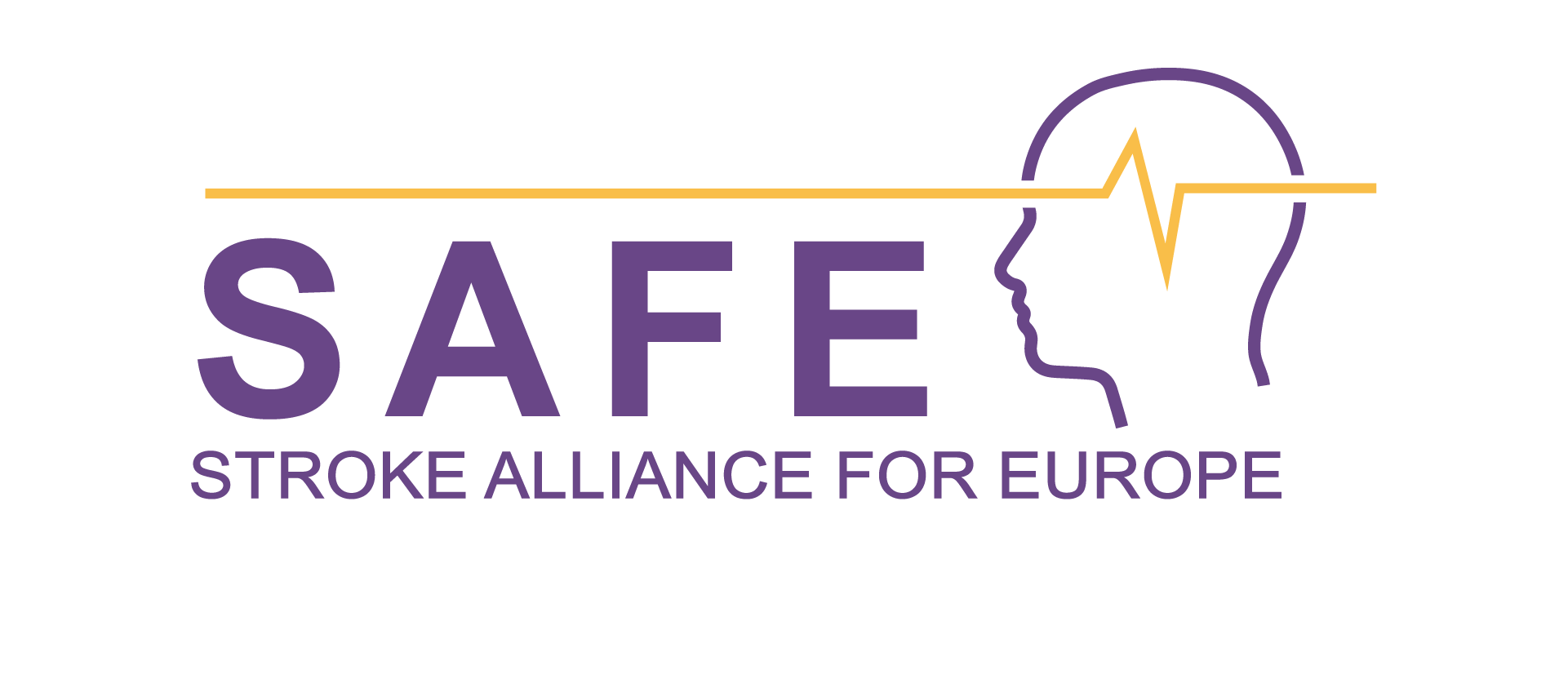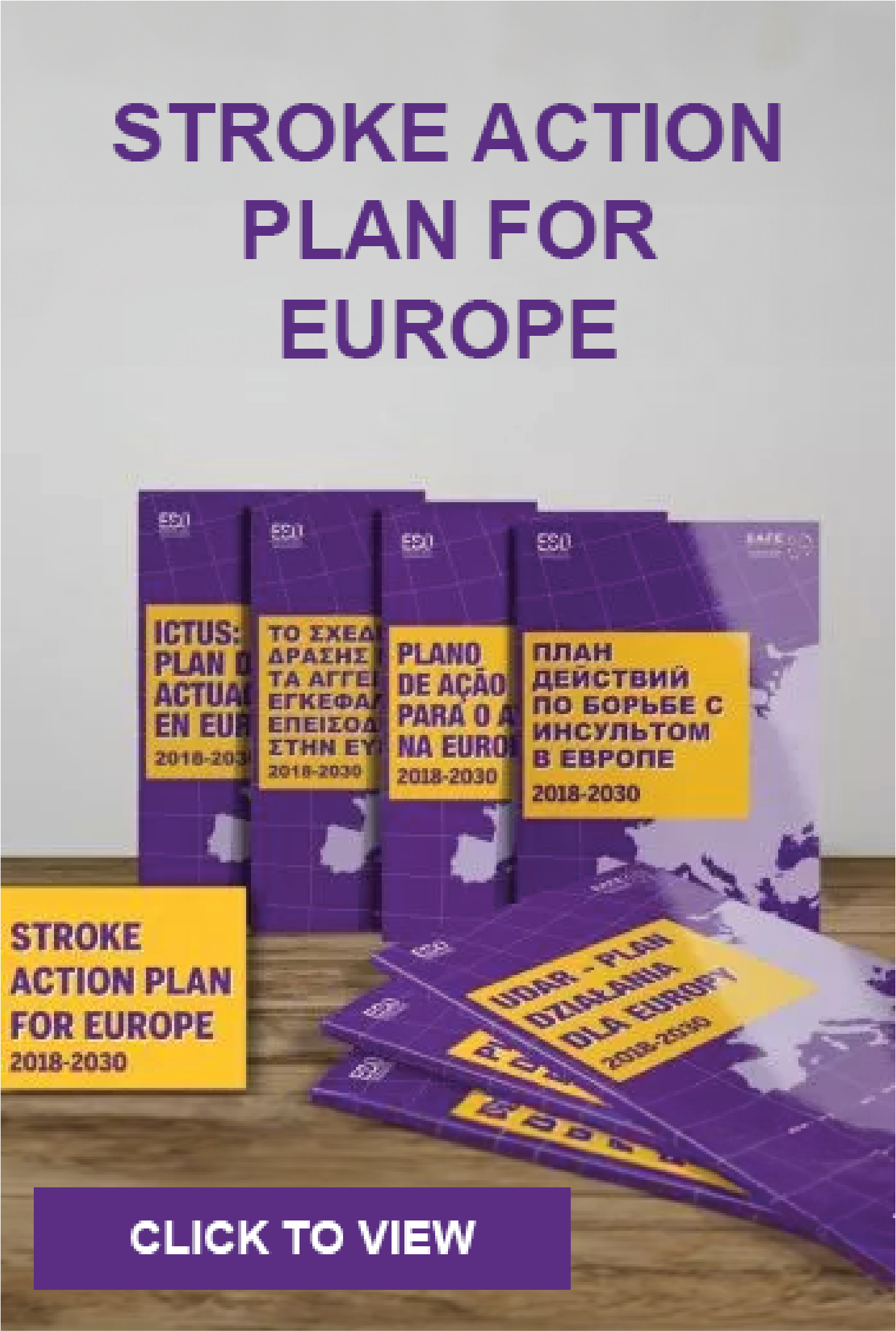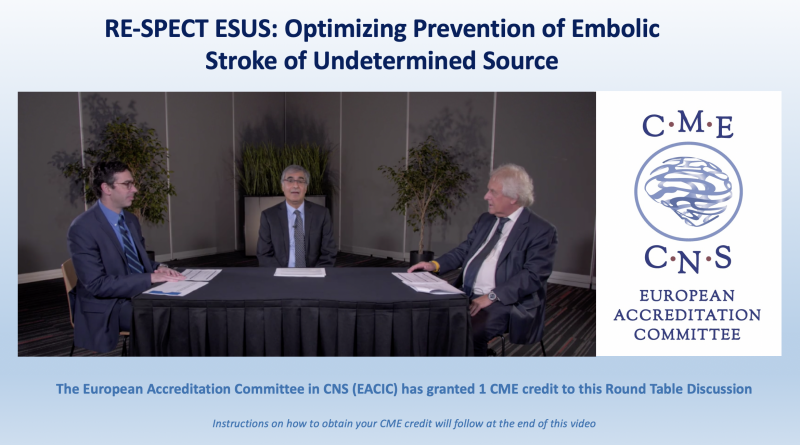
May 30, 2019
We would like to recommend to your attention a Round-Table discussion that held place at last year’s WSC in Montreal, Canada.
This Round Table Discussion reviews strategies for secondary prevention strategies in ESUS and the implications of the recent RE-SPECT ESUS results for clinical practice.
Following completion of this activity, learners will be able to:
- Describe RE-SPECT ESUS clinical trial results
- Outline the benefits and risks of NOACs in ESUS
- Discuss the implications of RE-SPECT ESUS for clinical practice
RE-SPECT ESUS: Optimizing Prevention of Embolic Stroke of Undetermined Source
Moderator:
Mike Sharma MD, MSc, Associate Professor, Division of Neurology, Department of Medicine, McMaster University, Ontario, Canada
Faculty:
Richard A. Bernstein MD, PhD, Professor of Neurology, Feinberg School of Medicine, Northwestern University, Illinois, USA
Hans-Christoph Diener MD, PhD, Professor of Neurology, University of Duisburg-Essen, Germany
Please click here to view video.

May 27, 2019
This article was first published on ScienceDaily.com
Although the occurrence of first-ever ischemic stroke (strokes due to a blood clot that blocks a blood vessel in the brain) at middle age has been decreasing over time, researchers have found that the decline is not as steep as seen in older adults.
The risk for stroke at midlife declined by approximately 39 percent, while risk of stroke at older age declined by 53 percent, when comparing a recent time period (1998-2005) to a previous time period (1962-67).
“Most strokes at midlife were due to diseases of the arteries (atherosclerosis) caused by a clot migrating from the heart. We also looked at vascular risk factors, such as hypertension and smoking, which have been declining among both age groups over time,” explained corresponding author Hugo J. Aparicio, MD, MPH, assistant professor of neurology at Boston University School of Medicine.
The researchers studied trends in the rate of ischemic stroke among two age groups in the Framingham Heart Study: middle age-35-55 years old and older age-above 55 years old. They estimated the rate of stroke occurring in four time periods, 1962-67, 1971-76, 1987-1991 and 1998-2005. They also looked at risk for stroke calculated using the Framingham Stroke Risk Profile, which gives an estimate for how likely a stroke will occur over the ensuing 10 years.
You can read the full article here.
Image source: Pixabay.com

May 20, 2019
This article was first published on ScienceDaily.com
A new study from the University of Eastern Finland shows that a moderately high intake of dietary cholesterol or consumption of up to one egg per day is not associated with an elevated risk of stroke. Furthermore, no association was found in carriers of the APOE4 phenotype, which affects cholesterol metabolism and is remarkably common among the Finnish population. The findings were published in the American Journal of Clinical Nutrition.
Findings from earlier studies addressing the association of dietary cholesterol or egg intake with the risk of stroke have been contradictory. Some studies have found an association between high dietary cholesterol intake and an increased risk of stroke, while others have associated the consumption of eggs, which are high in cholesterol, with a reduced risk of stroke. For most people, dietary cholesterol plays a very small role in affecting their serum cholesterol levels. However, in carriers of the apolipoprotein E phenotype 4 — which significantly impacts cholesterol metabolism — the effect of dietary cholesterol on serum cholesterol levels is greater. In Finland, the prevalence of APOE4, which is a hereditary variant, is exceptionally high, with approximately one third of the population presenting as carriers. Yet, research data on the association between a high intake of dietary cholesterol and the risk of stroke in this population group has not been available until now.
The dietary habits of 1,950 men aged between 42 and 60 years with no baseline diagnosis of a cardiovascular disease were assessed at the onset the Kuopio Ischaemic Heart Disease Risk Factor Study, KIHD, in 1984-1989 at the University of Eastern Finland. APOE phenotype data were available for 1,015 of the men participating in the study. Of those, 32% were known carriers of APOE4.
During a follow-up of 21 years, 217 men were diagnosed with stroke. The study found that neither dietary cholesterol nor egg consumption was associated with the risk of stroke — not even in carriers of APOE4.
The findings suggest that moderate cholesterol intake or daily egg consumption are not associated with the risk of stroke, even in persons who are genetically predisposed to a greater effect of dietary cholesterol on serum cholesterol levels. In the highest control group, the study participants had an average daily dietary cholesterol intake of 520 mg and they consumed an average of one egg per day, which means that the findings cannot be generalised beyond these levels. One egg contains approximately 200 mg of cholesterol. In this study, about a fourth of the total dietary cholesterol consumed came from eggs. Furthermore, the generalisability of this study is also weakened by the fact that the study population did not have a pre-existing cardiovascular disease at baseline and the size of the study population was relatively small. Therefore, the findings of the study should be verified in a larger cohort as well as in people with a pre-existing cardiovascular disease, who are currently advised to limit their intake of cholesterol and eggs.
Story Source: University of Eastern Finland. “Dietary cholesterol or egg consumption do not increase the risk of stroke, Finnish study finds.” ScienceDaily. ScienceDaily, 20 May 2019. <www.sciencedaily.com/releases/2019/05/190520093448.htm>.
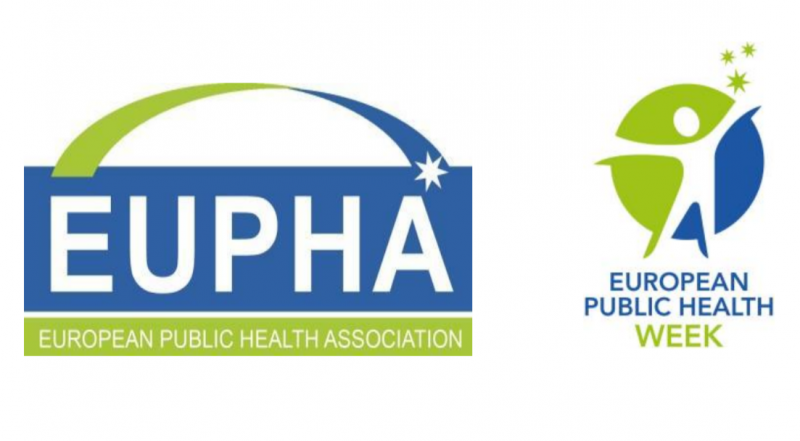
May 8, 2019
More than 70 events in over 25 countries take place between 13 and 17 May in first ever European Public Health Week
Ahead of Europe Day, the public health community in Europe prepares to unite. Between 13 and 17 May, more than 70 events across at least 25 countries will celebrate healthy populations and raise awareness about public health. Everyone is invited to organise and join these local, national and regional activities of the first ever European Public Health Week (EUPHW).
Initiated by the European Public Health Association (EUPHA), co-organised by the European Commission and supported by the WHO Regional Office for Europe, the innovative initiative launches on Monday 13 May in a two-hour kick-off in Brussels. EUPHW event organisers will answer questions from the
audience in the room and via live streaming, and participants will join a “walkinar” through a city park to promote ‘physical activity’, the theme of the first day.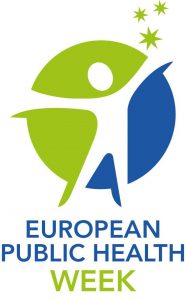
Events will continue throughout the week. Promotion of healthy cities, safe roads and clean air and water is the theme of day two, dedicated to ‘Healthy environments’. Day three, ‘Care 4 care’ reminds European citizens to take care of what takes care of them by investing in a strong, skilled health
workforce and promoting wellbeing in addition to treating diseases. The importance of a healthy diet while taking care of our planet is the theme for Thursday, ‘Sustainable and healthy diets’. On the final day of the week the focus will be on ‘Youth mental health’, promoting stable and supportive homes,
schools and social environments for Europe’s future generation.
Activities include workshops, lectures, webinars, games, sports classes, online campaigns, roundtable discussions and exhibitions, in several languages at local, national, regional and European level. EUPHA Executive Director Dineke Zeegers Paget, said: “We initiated the European Public Health WEEK to
show the full picture of public health by collaborating with our European partners and members. Public health goes far beyond health, involving people from all disciplines, from environment to occupational therapy. And this week also goes far beyond the European Union – we are covering the 53 countries of the WHO European Region. All of us have the right to health and our health needs to be safeguarded in
order to fully participate in society.”
EUPHA President Azzopardi Muscat, said: “We are two weeks away from the European elections and this initiative highlights that healthy populations require a commitment from all of us to ensure truly that nobody is left behind. Whilst Europe leads the way in many health indicators, there remains
much to do to achieve health-related targets in the sustainable development goals and there is no room for complacency in the face of growing inequalities and emerging challenges.”
Public health weeks have taken place in other countries in the past, such as the United States of America and Austria. Thomas Dorner from the Austrian Public Health Association said: “We have organised the Austrian Public Health Week for four years. It is very important to raise awareness of public health, particularly at a time when misinformation could be dangerous for people’s health. We are very glad to see that such initiatives are taking place from local to global level to celebrate healthy populations.”
For more information, visit eupha.org/European_Public_Health_WEEK_2019
What is EUPHA?
The European Public Health Association, or EUPHA in short, is an umbrella organisation for public health associations in Europe. Our network of national associations of public health represents around 20’000 public health professionals. Our mission is to facilitate and activate a strong voice of the public health network by enhancing visibility of the evidence and by strengthening the capacity of public health professionals. EUPHA contributes to the preservation and improvement of public health in the European region through capacity and knowledge building. We are committed to creating a more inclusive Europe, narrowing all health inequalities among Europeans, by facilitating, activating, and disseminating strong evidence-based voices from the public health community and by strengthening the capacity of public health professionals to achieve evidence-based change.
EUPHA’s definition of Public Health
“The science and art of preventing disease, prolonging life and promoting health and well-being through the organised efforts and informed choices or society, organisations, public and private, communities and individuals, and includes the broader area of public health, health services research, health service delivery and health systems design.”
This activity received funding under an operating grant from the European Union’s Health Programme (2014-2020).
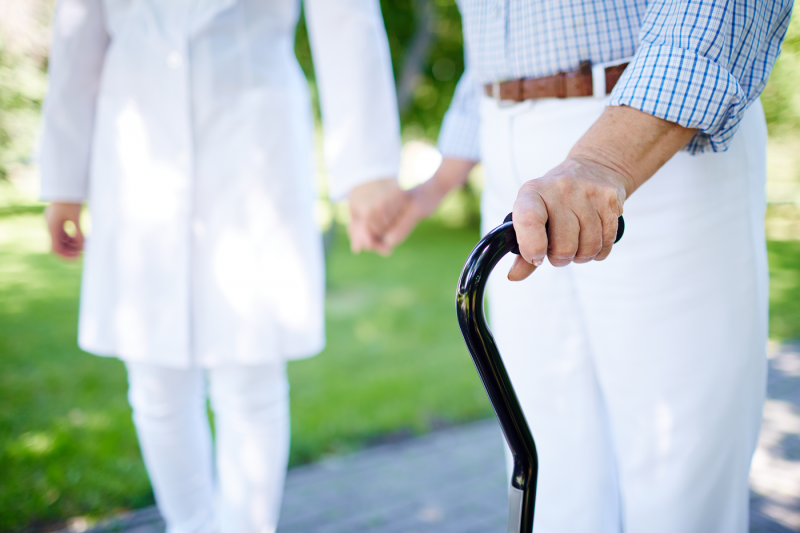
Apr 17, 2019
This article was first published on ESO website | Author: Giuseppe Reale, MD – ESO YSPR Committee
Same stroke, same treatment and lower limb weakness, but forget about upper motor neurons!
Sometimes it seems that stroke treatment is all about time, tissue and recanalization, whatever it takes. However, it is important to remember that danger might be just around the corner, even after a successful recanalization.
A 66-year old man was carried to our Emergency Department 4 hours after the acute onset of right hemiplegia and aphasia. CT-Angiography (CTA) showed a M1 left middle cerebral artery (MCA) occlusion and the patient underwent to systemic thrombolysis followed by mechanical thrombectomy in general anesthesia with right femoral access. When the patient was admitted to the Stroke Unit, he presented only right lower limb weakness, being able to flex the thigh at hip, but not to extend the leg at knee. The right patellar tendon reflex was absent, while the left was elicitable. The segmental weakness pattern and the reflex asymmetry suggested a femoral neuropathy. CTA of lower extremities excluded the presence of iliacus hematoma or femoral artery aneurysm. The patient had a spontaneous recovery of the neurological deficits within one week. The electromyography performed three weeks later did not show any finding of denervation at the quadriceps muscle, suggesting a previous femoral neuropraxic block.
An 82-year old woman with the same symptoms and radiological findings of the previous patient underwent thrombolysis and thrombectomy with right femoral access in general anesthesia.
When transferred to the Stroke Unit, she presented just a mild drift of the right lower limb, but the day after she developed a complete plegia of the right lower limb associated with “mild pain and an unpleasant cold sensation”. The right lower limb was cold and distal pulses were absent. CTA of the lower extremities demonstrated a pseudoaneurysm of the common femoral artery, associated with distal arterial occlusion. The patient underwent emergency femoral endarterectomy without any complication.
You can read the full article here.
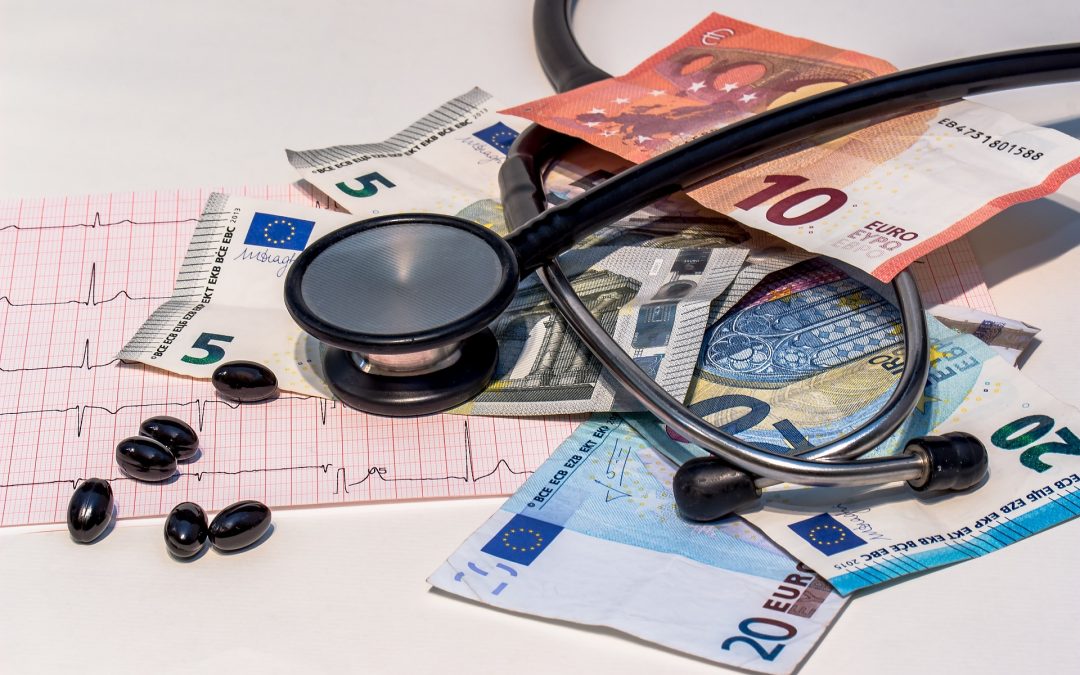
Apr 8, 2019
First published on ScienceDaily.com
The full financial cost of a heart attack or stroke is twice as much as the medical costs when lost work time for patients and caregivers is included.
That’s the finding of research published today, World Health Day, in the European Journal of Preventive Cardiology, a journal of the European Society of Cardiology (ESC).1 The study concludes that victims of heart attack and stroke who return to work are 25% less productive in their first year back.
In the year after the event, heart patients lost 59 workdays and caregivers lost 11 workdays, for an average cost of €13,953, and ranging from €6,641 to €23,160 depending on the country. After stroke, 56 workdays were lost by patients and 12 by caregivers, for an average €13,773, ranging from €10,469 to €20,215.
Study author Professor Kornelia Kotseva, of Imperial College London, UK, said: “Patients in our study returned to work, meaning their events were relatively mild. Some still had to change jobs or careers, or work less, and caregivers lost around 5% of work time. Not included in our study are those with more severe events who quit work altogether and presumably need even more help from family and friends.”
The study enrolled 394 patients from seven European countries — 196 with acute coronary syndrome (86% heart attack, 14% unstable chest pain) and 198 with stroke — who returned to work 3 to 12 months after the event. Patients completed a questionnaire2,3 during a visit to a cardiologist, neurologist, or stroke physician. Hours lost were valued according to country labour costs in 2018. The average age of patients was 53 years.
According to published estimates for Europe, the direct medical costs of acute coronary syndrome are €1,547 to €18,642, and €5,575 to €31,274 for stroke.4 “This is the metric commonly used to estimate the costs of medical conditions while indirect costs from productivity loss are often not taken into account by clinicians, payers or policymakers,” said Professor Kotseva. “Taken together, the actual burden on society is more than twice the amount previously reported.”
You can read the full article here.

